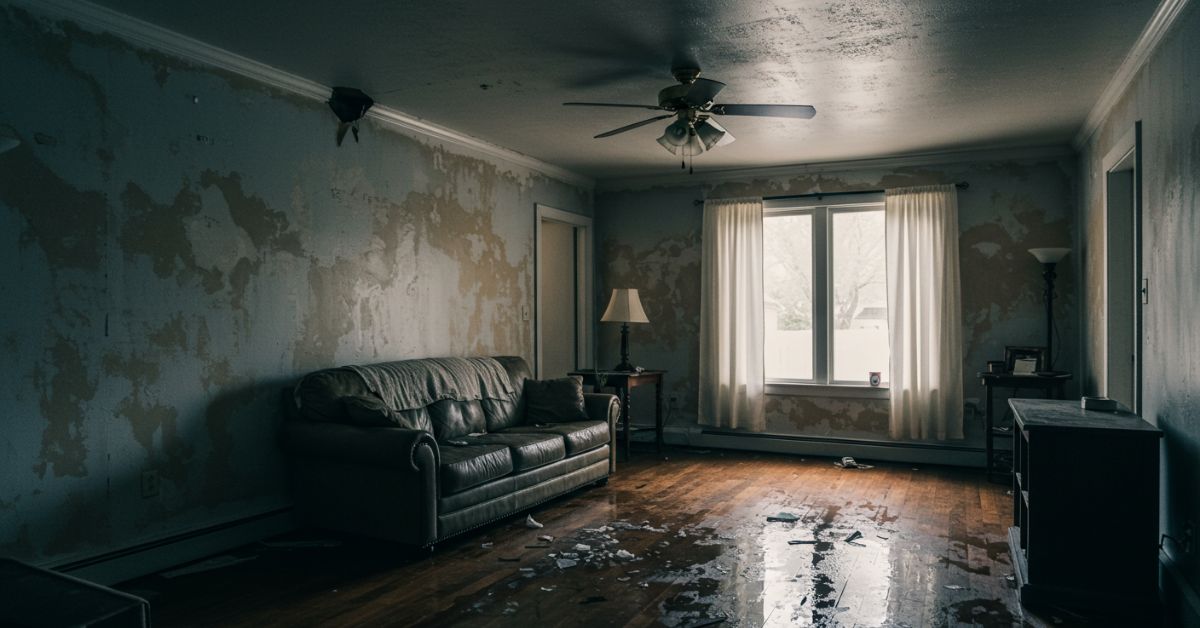Water damage can strike without warning, and the moments immediately after discovering a leak or flood are crucial. What you do in those first hours can have a significant impact on the extent of damage to your property and the smoothness of the restoration process. Before the Sarkinen Restoration arrives, there are several important steps you can take to reduce further destruction and prepare your home for professional service. We will explore how homeowners can take charge of the situation while awaiting professional help, ensuring that safety, organization, and readiness remain at the forefront.
Steps to Take Before the Restoration Team Arrives
The very first step after noticing water damage is to ensure the safety of everyone in the household. Water, especially from floods or broken pipes, can come into contact with electrical systems, posing a risk of electrical shock. Before touching or moving anything, assess whether it’s safe to remain in the area. If the water level is high or you suspect any wires or appliances have been compromised, shut off your home’s power at the breaker—if it can be done safely. Avoid standing water in rooms with active electricity. Safety should always take priority over salvaging items. If necessary, evacuate the area and wait for professionals, such as Sarkinen Restoration in Vancouver, to assess the situation.
Once personal safety is ensured, stopping the source of the water should be your next priority. In many cases, a broken pipe or faulty appliance is to blame. Shutting off your home’s main water valve or the valve to the affected appliance can prevent additional water from flowing into the space. In the case of roof leaks, placing buckets or containers to catch water can help reduce pooling. If heavy rain is the cause, try to clear gutters or drains safely to direct the water away from the property until help arrives.
Next, document the damage thoroughly. While it may be tempting to start cleaning up right away, taking photos and videos of all affected areas will help immensely when dealing with your insurance company. Walk through the property slowly and capture images from multiple angles. Be sure to include any damaged personal belongings, structural issues, or soaked building materials. Make notes on when you discovered the damage and what the source appeared to be. This type of documentation provides a clear record and can help validate claims during the restoration process.
With documentation completed, begin removing valuable or vulnerable items from the affected area if it’s safe to do so. Start with personal documents, electronics, artwork, or anything else that could be permanently damaged by continued exposure to water. Avoid moving heavy furniture or appliances alone—focus on what you can reasonably manage without risking injury. If time and energy allow, placing small pieces of furniture on blocks or aluminum foil can help lift them off wet floors, reducing staining and moisture absorption.
Drying out the area as much as possible before the restoration team arrives can also make a difference. Opening windows and using fans or dehumidifiers can help reduce moisture in the air and slow down mold growth. However, this should only be done if weather conditions permit and it’s safe to access electrical devices. Ventilation is especially important in bathrooms, basements, and other enclosed spaces that are prone to dampness. The more airflow you can safely create, the better the chance of minimizing long-term damage to your home.
Gather important information and documents before the team arrives. This includes your insurance policy details, any receipts or warranties for damaged items, and contact information for your insurance agent. If you’ve already spoken with your provider, write down the claim number and the name of the representative you spoke to. Having everything in one place not only makes it easier for the restoration professionals to understand your situation but also ensures you’re ready for any immediate next steps.
It’s also a good idea to secure pets or small children away from the damaged areas. Restoration professionals will need clear access to affected spaces, and having animals or kids nearby could slow down the process or create unnecessary hazards. Designating a safe, dry space for your family and pets to wait can keep things organized and reduce the risk of injuries or accidents while work is underway.
Additionally, clear a path for the restoration team. Move vehicles, furniture, or large objects that might block access to entrances or damaged areas. If the water damage has affected multiple levels of the home, ensure that stairs and walkways are safe and free from debris. Keep in mind that professionals may be bringing in equipment such as pumps, fans, and drying machines, so space and mobility will be crucial to completing the job efficiently.
One overlooked step is notifying neighbors if the damage might affect them. For example, if the water source is shared—like in an apartment or townhouse—or if flooding could leak into neighboring units, giving them a heads-up is not only courteous but also prevents further complications. Collaboration in shared living spaces ensures that the restoration process goes more smoothly for everyone involved
Water damage can feel overwhelming, but being prepared before the professionals arrive makes a measurable difference. By prioritizing safety, documenting the damage, limiting moisture exposure, and organizing key information, you give the restoration team a head start on restoring your home to its normal state. Sarkinen Restoration is well-equipped to handle water emergencies, but your readiness can accelerate their process and reduce long-term costs or repairs. Taking calm, thoughtful steps today can save time, money, and stress tomorrow.
